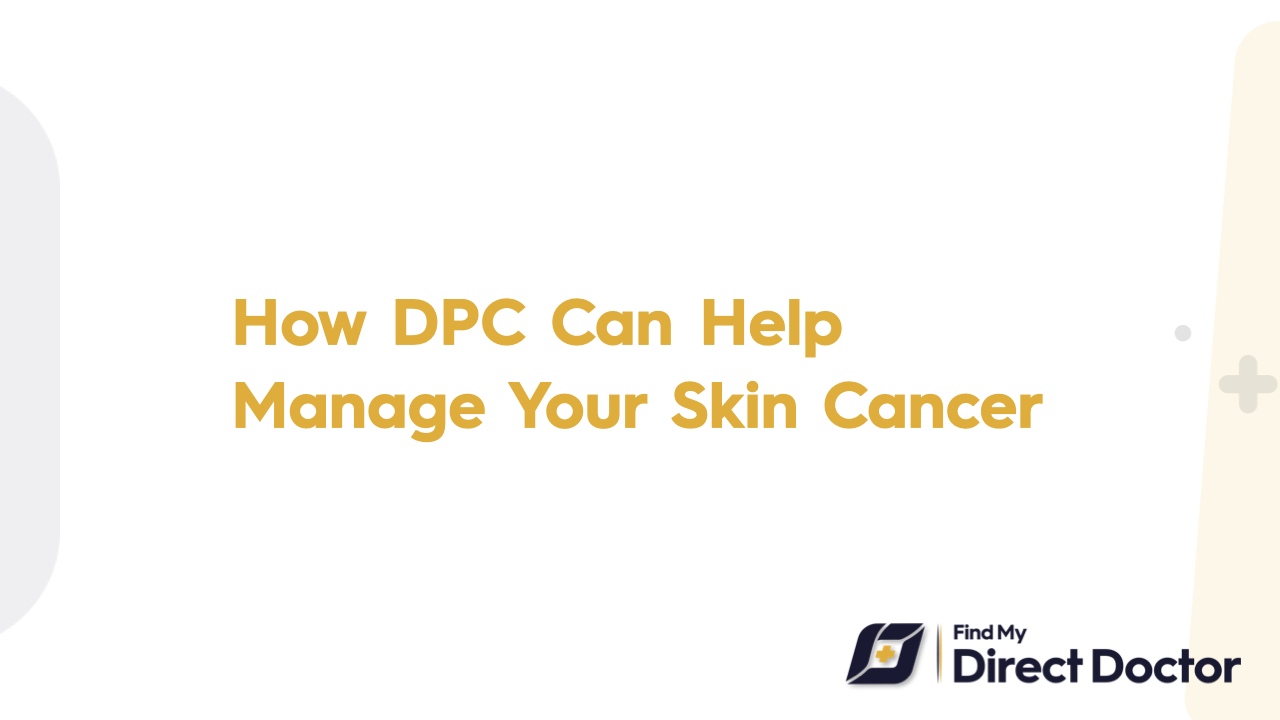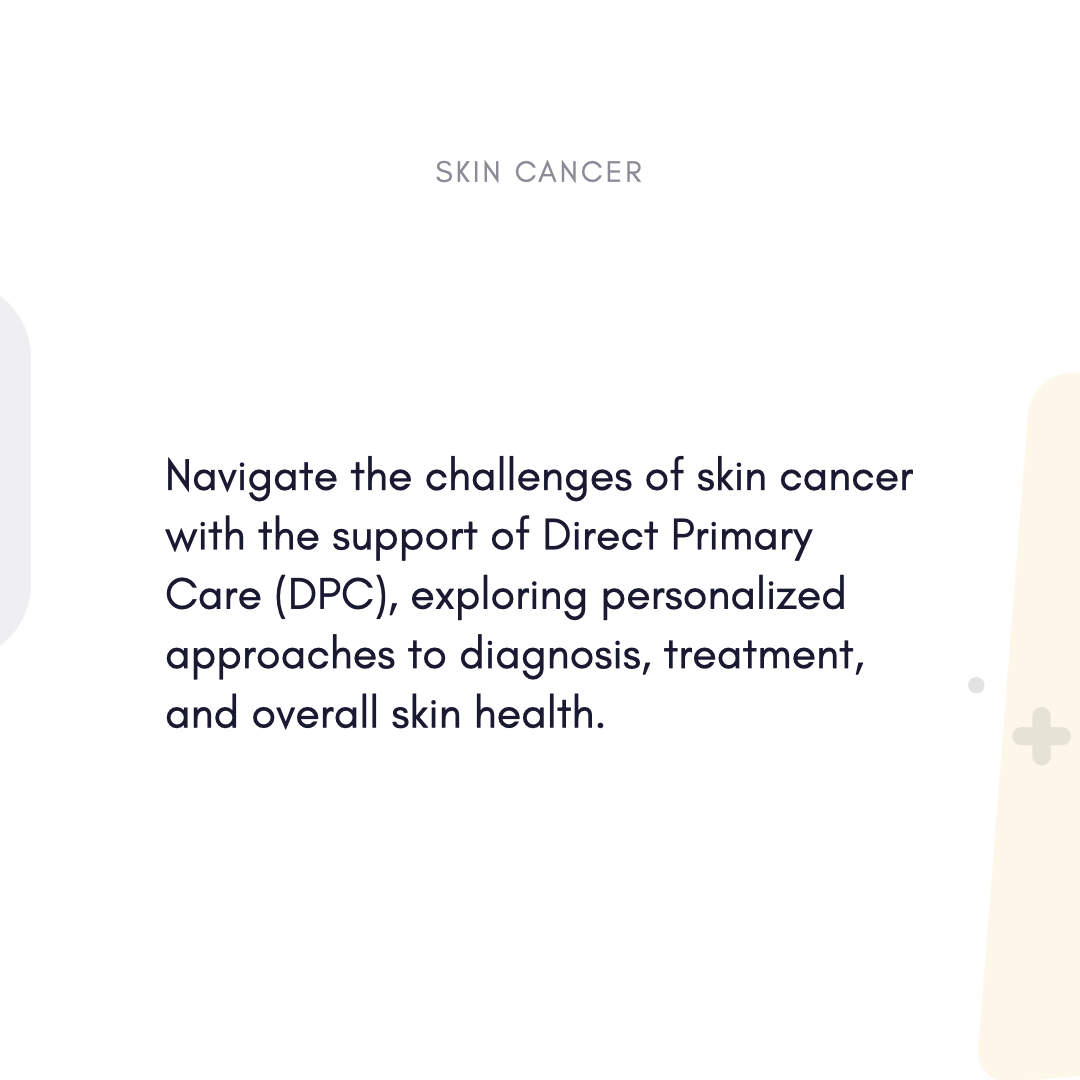Skin Cancer and Direct Primary Care (DPC): Early Detection, Personalized Protection
You know the anxiety skin cancer can cause if you have ever seen an irregular mole, fought a non-healing sore, or worried about sun damage from years of outdoor activity. By age 70, one in five Americans will have skin cancer; early detection is therefore essential to avoid disfigurement or spread. There is hope, though: Direct Primary Care (DPC) presents a proactive, patient-centered method of skin cancer management combining fast diagnostics, cost transparency, and care catered to your particular risks.

Appreciating Skin Cancer and Its Risks
Mostly brought on by UV radiation, skin cancer is the unchecked proliferation of aberrant cells. The three primary forms consist in:
- Most common but hardly spreads is basal cell carcinoma (BCC).
- Faster-growing squamous cell carcinoma (SCC) can spread.
- Most lethal, accounting for 75% of skin cancer deaths is melanoma.
Warning indicators:
- Asymmetrical moles featuring erratic borders or color variations
- Sores that bleed, scratch, or never heal.
- Dark dots or rapidly expanding lesions beneath nails
Delayed care carries long-term hazards.
- Surgical deformity
- Distribution to organs or lymph nodes
- Recurrence or secondary tumors
DPC's Transformational Effect Skin Cancer Maintenance
Under the membership model known as Direct Primary Care (DPC), patients pay a monthly fee—usually 50 USD–150 USD—for unlimited access to their main care physician. For those with skin cancer, this translates into no surprises bills, no delays in biopsies, and treatment emphasizing accuracy and prevention.
Here's why DPC distinguishes itself:
1. Rapid, Guideline-Driven Detection
DPC doctors use American Academy of Dermatology (AAD) guidelines including:
- Examining full-body skin: Annual evaluations for high-risk patients (fair complexion, family history, or past UV radiation).
- Using handheld instruments, in-house dermoscopy magnifies and examines suspicious moles free from referral delays.
- Same-day sampling of worrisome lesions sent to labs at agreed upon cash rates results in prompt biopsies.
2. Cost-effective, open treatment
- DPC clinics provide wholesale-priced topical treatments like imiquimod, so lowering costs.
- Steering clear of needless referrals (30% of dermatological visits are for benign lesions).
- If necessary, coordinating discounted surgeries with nearby Mohs surgeons.
3. Constant, Preventative Support
- Review new or changing moles using secure photo uploads with 24/7 access to your DPC doctor.
- Change your sun protection plan—that is, choose UPF clothes or another sunscreen.
- Refer to mental health resources to control post-treatment stress or scanxiety.
DPC Benefits for Skin Cancer Patients: Customized Prevention Strategies
During each visit, DPC doctors dedicate 30 to 60 minutes developing plans including:
- Studies of risk: For low-sun climates, vitamin D optimization or genetic testing for melanoma-prone families.
- Teaching self-exams using the ABCDE rule—asymmetry, border, color, diameter, evolving—is lifestyle coaching.
- Integrated treatment: suggesting antioxidants (nicotinamide) to lower SCC recurrence.
Cost Reduction
- No co-pays for quick mole checks.
- In conventional settings, biopsies between 100 USD and 200 USD compare to 500 USD+.
- Discounted appointments for topical treatments or cryotherapy.
Perfect Coordinator for Specialists
- DPC doctors negotiate cash rates for Mohs surgery or immunotherapy if advanced treatment is required.
- Share your complete background to prevent unnecessary tests.
- Track recurrences early by means of recovery.
Personal Success Stories from Real Life
- Case 1: 45-year-old Sarah noticed a changing mole but postponed treatment because of cost. Her DPC doctor biopsied it same-day, diagnosed stage 0 melanoma, and set up reasonably priced excision—saving her life.
- Case 2: Mike, sixty, suffered repeated BCCs. Prescription low-cost imiquimod cream and sun-protection advice from his DPC clinic helped to stop fresh lesions for two plus years.
Ask questions about DPC and skin cancer.
- Q: Can DPC physicians remove moles classified as cancerous?
- A: They ensure you pay fair cash prices by handling early-stage biopsies and working with surgeons for excisions.
- Q: Is DPC within high-risk patients' budget?
- A: Indeed. By skipping inflated pathology charges and dermatologist co-pays, members save 40–60% on average.
- Q: Should I be seeing a dermatologist?
- A: DPC doctors often schedule same-week visits with reputable experts and streamline referrals.
Why DPC Benefits Patients With Skin Cancer
Early discovery is stressed by the AAD as the main way to lower skin cancer death. DPC backs this up with:
- Early lesion catching: Regular tests cut late-stage diagnosis.
- Teaching patients self-checks and sun safety helps them to be empowered.
- Simplifying treatment: One fixed monthly cost covers unlimited visits, pictures, and follow-ups.
Use DPC to Future-Protect Your Skin
Skin cancer need not be a silent threat. Using DPC results in a partner who values your budget, awareness, and peace of mind—every stage of the process.






